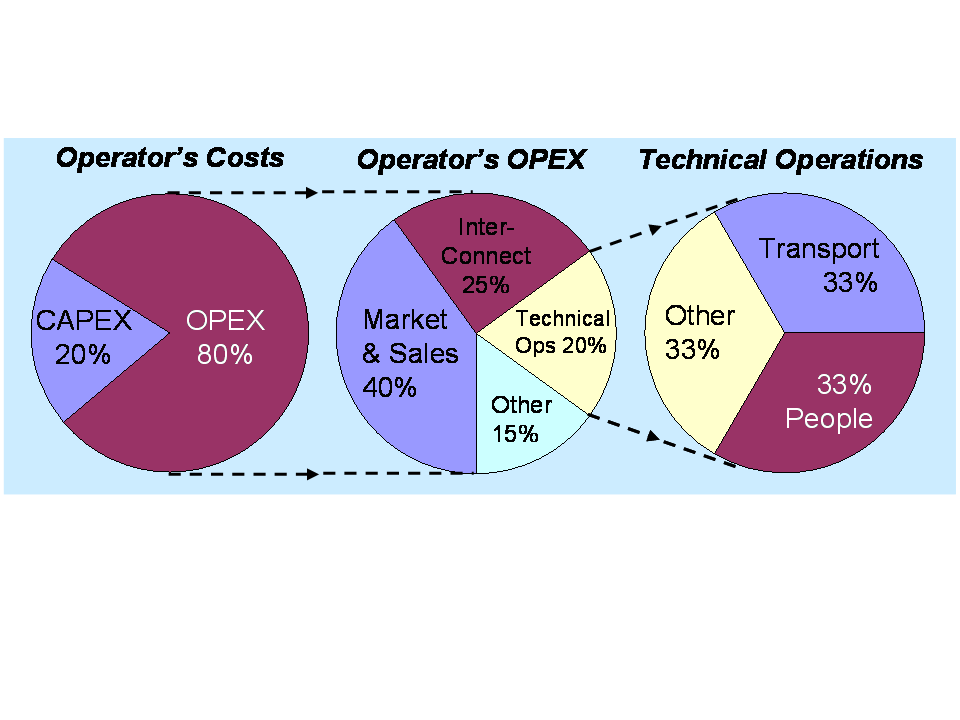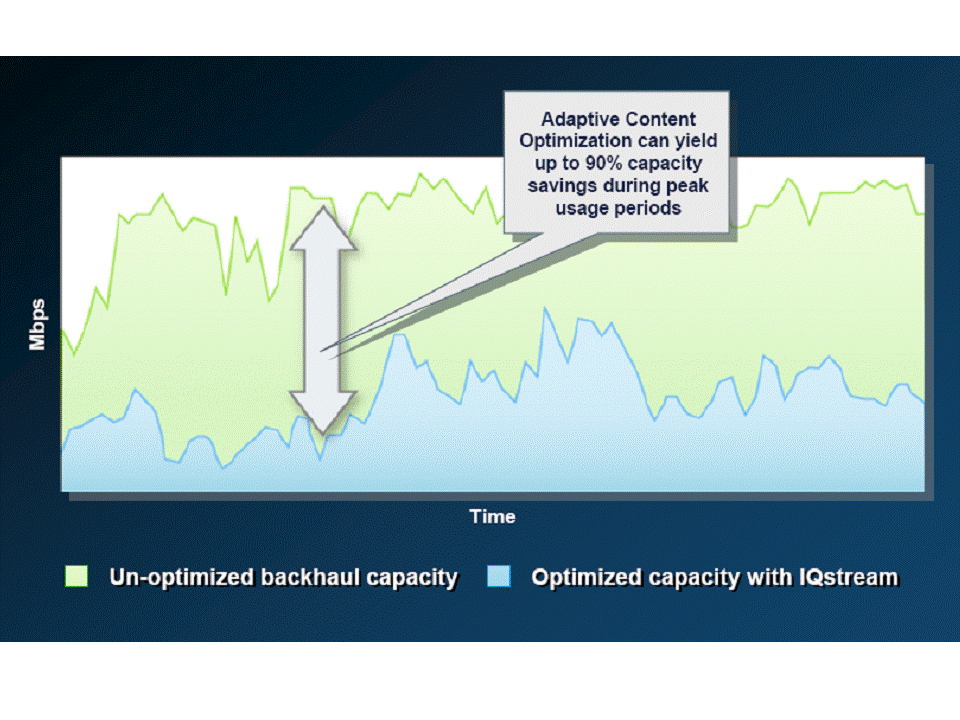This old weblog article from 2008 discusses the cost structure of a typical mobile operator, and I show below the structure graphically. The key figure is transport costs (backhaul) are roughly 7% of total costs back in 2008. Some operators have seen that jump to over 15%-20% of total costs in under 2 years. The reason is the tipping point achieved in mobile broadband adoption, discussed in this article.

Backhaul is the transport link from the radio base station into the mobile network’s core. Its generally leased line (copper or fiber), microwave or metro Ethernet; the choice is highly influenced by the incumbent fixed operator’s role in the mobile market, level of competition and local regulation. For example, BT has been aggressive in its metro Ethernet pricing to keep its backhaul business in a competitive market, while in the less competitive French market France Telecom is able to keep backhaul costs significantly higher (outside Paris.)
At the moment we’re seeing lots of excitement around LTE (Long Term Evolution), which requires operators to deploy a third radio access network (after 2G and 3G) and a separate core network that is claimed to somehow magically lower operational costs. Back in 2008 this weblog article discussed that fallacy. Unfortunately the NEP’s marketing engines have kept on rolling in the face of common sense and we’re now seeing some operators realize that its not an air interface issue, HSPA and HSPA+ are perfectly adequate for their customers’ needs. Its a backhaul issue, those 3 sectors running at 20Mbit/s require 50+ Mbps of backhaul, while there had only been 8 Mbps in place. Quadrupling the capacity has doubled / tripled the transport cost, hence the jump in backhaul costs from 7% to 15-20% depending on the market.
To alleviate this problem Sycamore Networks have come up a very smart technology, IQStream – props to Scott Hilton, Talbot Hack, Yang Cao and the rest of the team for their excellent innovation. As shown below it can provide up to 90% capacity saving in the backhaul, of course the design rule will be more conservative. At least Sycamore Networks are focusing on the key part of the problem, rather than encouraging operators to make decisions not in their best interest. For the sake of our industry the NEPs must stop conning operators, and act in their customer’s best long term interest not their own short term interests.
